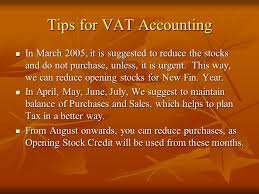10 Important
Income Tax Change with effect from 1st April 2018 ( FY 18-19 )
CA AMARJIT SINGH
Tax
Concessions to Senior Citizens
The Budget 2018 failed
to do much for taxpayers as well as the salaried class. However, some sections
of society, particularly senior citizens, gained much from its proposals.
Whatever be the case, as a taxpayer we need to be aware of the tax proposals of
this year’s Union Budget as they are going to impact our earnings as well as
the day-to-day lives from the upcoming financial year (2018-2019). Here we are
taking a look at 10 such tax rules which will change from 1st April 2018.
1.
Health and Education Cess
The Budget 2018 didn’t
make any changes in the tax rates or tax slabs for individuals and HUFs, which
continue to remain the same for Assessment Year 2019-20 as applicable for
AY2018-19. However, it has proposed a new cess – Health and Education Cess –
which will be levied at the rate of 4% of income tax, including surcharge, in
place of the current 3% Education, Secondary and Higher Education Cess from
Financial Year 2018-19 onwards.
2. Reintroduction of standard
deduction
At present no standard
deduction is available for salaried employees. However, exemption in respect of
transport allowance and reimbursement of medical expenses is provided. The
Budget 2018 has proposed a standard deduction of a maximum of Rs 40,000.
However, the current exemption in respect of transport allowance and
reimbursement of medical expenses will be withdrawn. The net benefit will only
be Rs 5,800.
3. Deduction in respect of
interest earned by senior citizen
Currently, a deduction
up to Rs 10,000 is allowed to all individuals in respect of interest income
from deposit accounts (not being time deposits) held with any bank,
co-operative society and post office.
It is proposed to
allow a deduction up to Rs 50,000 in respect of interest income from deposits
held with banks, co-operative society and post office by senior citizens. No
separate deduction will be available under section 80TTA for interest income
from savings account for senior citizens.
4. Medical treatment of
senior citizens for specified diseases (Sec 80DDB)
Under the existing
provisions, deduction is available to resident individuals and Hindu Undivided Family (HUF) for any amount incurred for
the medical treatment of specified diseases (i.e. malignant cancers, AIDS,
etc). The deduction is limited to Rs 60,000 for expenses relating to senior
citizens and Rs 80,000 with respect to very senior citizens. The Budget has proposed
to enhance the above deduction limit to Rs 100,000 uniformly for both
categories.
5. Enhanced deduction for
health insurance, medical expenditure related to senior citizens (Section 80D)
Under the existing
provisions, a maximum deduction of Rs 30,000 is allowed to an individual or HUF
for payment towards health insurance premium including Rs 5,000 towards
preventive health check-up for resident senior citizens. Alternatively, very
senior citizens can claim a deduction of Rs 30,000 for payment towards medical
expenses where there is no insurance. The Budget 2018 has proposed a maximum
deduction of up to Rs 50,000. Besides senior citizens can also claim the
deduction for medical expenditure.
6. Compensation on
termination or modification of employment
Currently, certain
compensation in connection with employment is out of the purview of taxation,
leading to base erosion and revenue loss.
“It is proposed that
any compensation or other payments due to or received by any person in
connection with the termination or the modification of the terms and conditions
of any contract relating to his employment shall be taxable under the
head income from other sources,” according to a Deloitte report.
7. Extending the benefit of
tax-free withdrawal from NPS
At present, an
employee contributing to the National Pension System (NPS) is allowed an
exemption in respect of 40% of the total amount payable to him on closure of
his account or on his opting out. This exemption was not available to
non-employee subscribers. The Budget 2018 now proposes to extend the said
benefit to all NPS subscribers.
8. Taxability of Long-Term
Capital Gains on equity shares
The Budget 2018 has
proposed 10% tax on the long-term capital gains (LTCG) arising out of the sale
of equity-oriented mutual fund (MF) schemes as well as equity shares, in case
of capital gains exceeding Rs 1 lakh in a year. Also, no benefit of indexation
will be given.
9. Exemption from taxation of
long-term capital gains invested in specified bonds
Deduction under
section 54EC is available in respect of capital gain, arising from the transfer
of a long-term capital asset, invested in the long-term specified asset at any
time within a period of six months after the date of such transfer. Long-term
specified asset means any bond, redeemable after three years and issued on or
after the 1st day of April, 2007 by the National Highways Authority of India
(NHAI) or by the Rural Electrification Corporation Limited (RECL); or any other
bond notified by the Central Government. Now Section 54EC is proposed to
restrict the exemption in respect of capital gain arising from the transfer of
a long-term capital asset, being land or building or both only and not other
capital assets. Further, it is proposed to allow the benefit when the
redeemable period of specified bonds is 5 years.
10. Taxability of single
premium health insurance policies
In case of single premium
health insurance policies having the term of more than a year, the Budget 2018
has proposed that deduction should be allowed on proportionate basis for the
number of years for which the cover is provided, subject to the specified
monetary limit.










